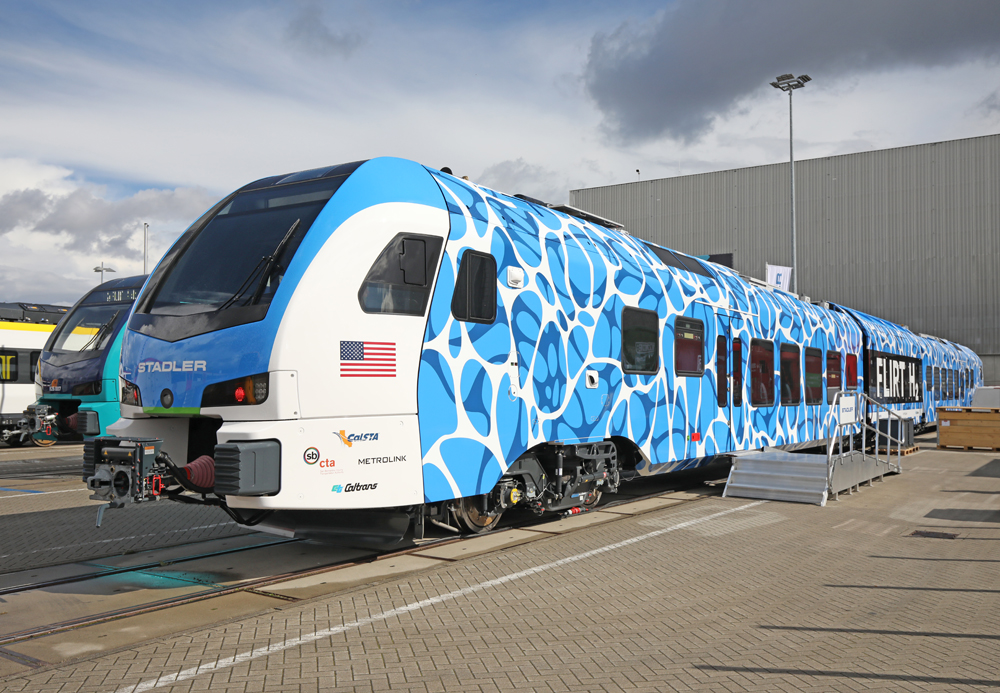
PUEBLO, Colo. — Stadler Rail’s hydrogen powered multiple-unit passenger trainset has set a record by traveling more than 1,700 miles without refueling or recharging.
The FLIRT H2 trainset, destined for use on the San Bernardino County Transportation Authority’s Arrow service, covered 1,741.7 miles on the test loop at the Transportation Technology Center in Pueblo. The record run — certified by observers from the Guinness World Records team — began on the evening of March 20. With the train operated in shifts by engineers from Stadler and ENSCO, operators of the TTC, it concluded more than 46 hours later, at 5:32 p.m. Mountain time on March 22.
It is the second world record established by one of Stadler’s alternative-propulsion versions of a FLIRT trainset; a battery-powered FLIRT Akku set a record for the longest trip in pure battery mode, 224 kilometers (139.2 miles) in Germany in 2021.
“This world record establishes the ideal performance range of our hydrogen version of the best-selling FLIRT Electrical Mutiple Unit,” Dr. Ansgar Brockmeyer, Stadler executive vice president of marketing and sales, said in a press release. “This is a monumental achievement from our entire team and we are very proud to hold another record title.”
The H2 built for San Bernardino consists of two electrically powered end cars with a power unit in the middle containing the fuel cells and hydrogen tanks. The fuel cells convent the hydrogen into electricity stored in the battery, which also collects energy from braking. The train offers seating for 108 passengers as well as standing room, and can operate at speeds up to 79 mph. The record distance far exceeds the demands the trainset is likely to face in regular service; the Arrow line is a 9-mile route connecting San Bernardino and Redlands, Calif. [see “Stadler unveil first hydrogen train for U.S. …,” Trains News Wire, Sept. 21, 2022].
Additional H2 trainsets have been ordered by the state of California for service in the San Joaquin Valley [see “California orders six more hydrogen-powered trainsets …,” News Wire, Feb. 15, 2024].














This is just a manufacturer’s test for bragging rights. Optimizing test conditions is fair ball. Nobody takes their performance car to the drag strip on a snowy day.
That said, the Flirt hydrogen train can clearly delivery a substantial range that should make it competitive with diesel multiple units. Hydrogen is expensive at present but could be quite affordable when produced using electrolysis with electricity from renewable or nuclear sources.
So, you have a train that goes those miles without any grades? Also operated at ~ average 38 MPH. Probably top speed 40 MPH including stops for crew changes??
More thought! Did the “test” run start with a full battery and H2 fuel line connected until say 1 minute before start? That much like rocket launches. Also, what were the weather conditions that could effect the H2 fuel load and operating conditions? The devil is in the details.
1700 miles on one charge/tank? Wow, that’s pretty far! Anyone know what the range of the diesel-electric version of the FLIRT is?